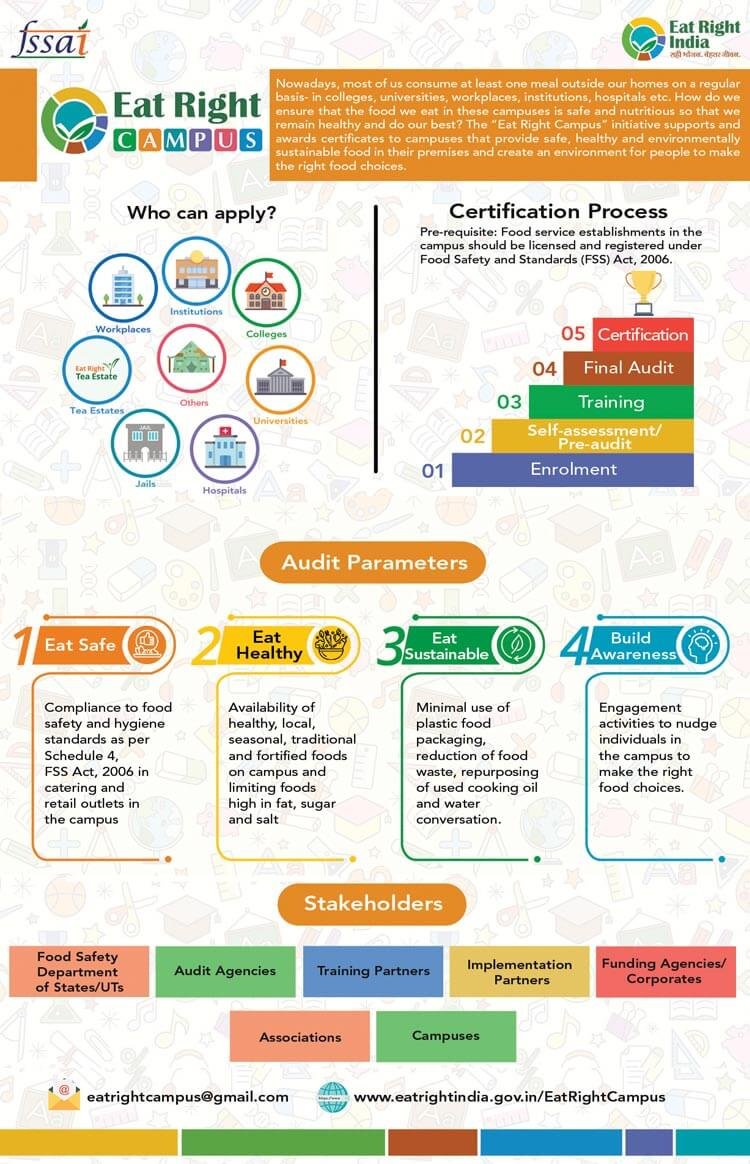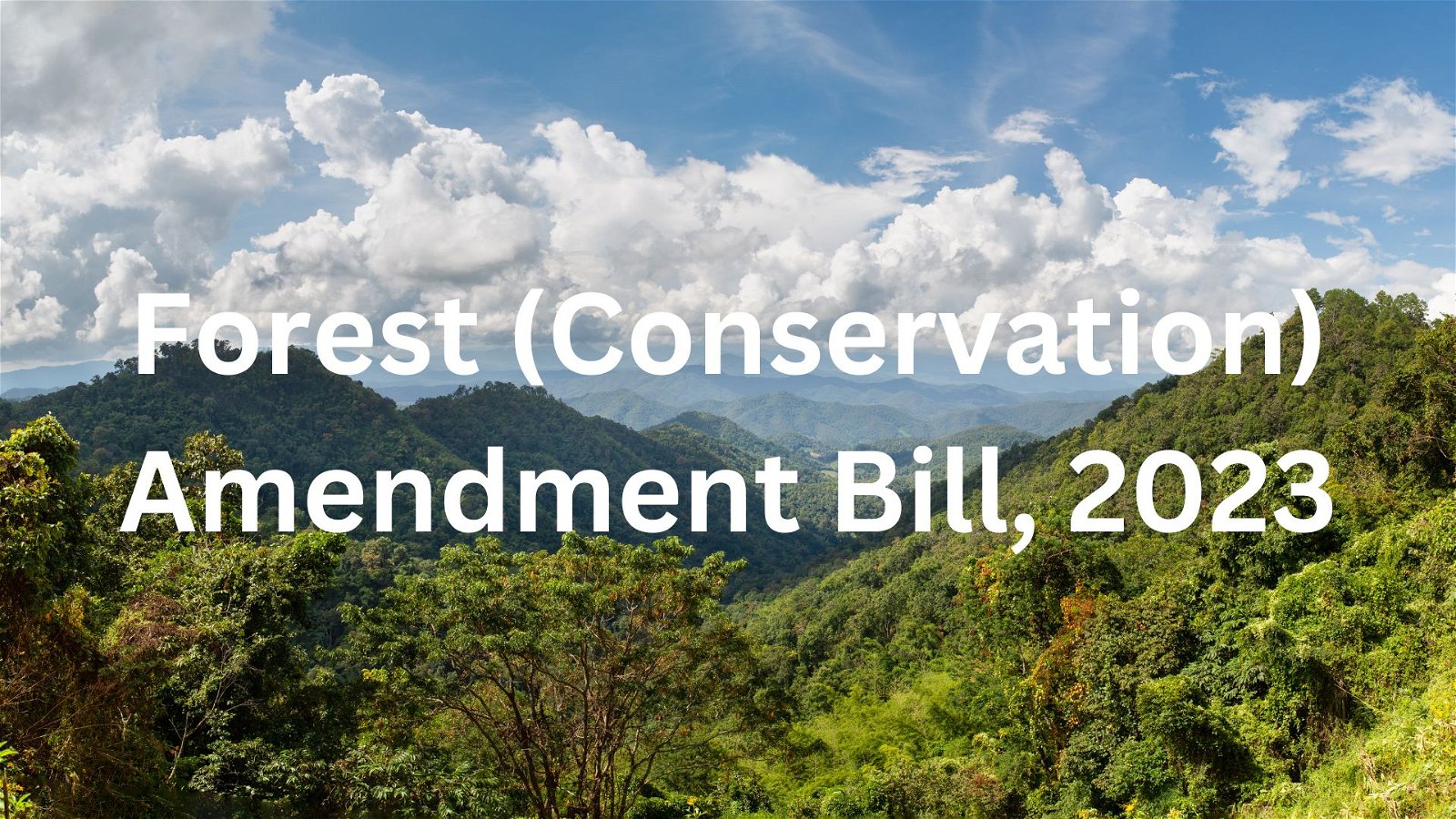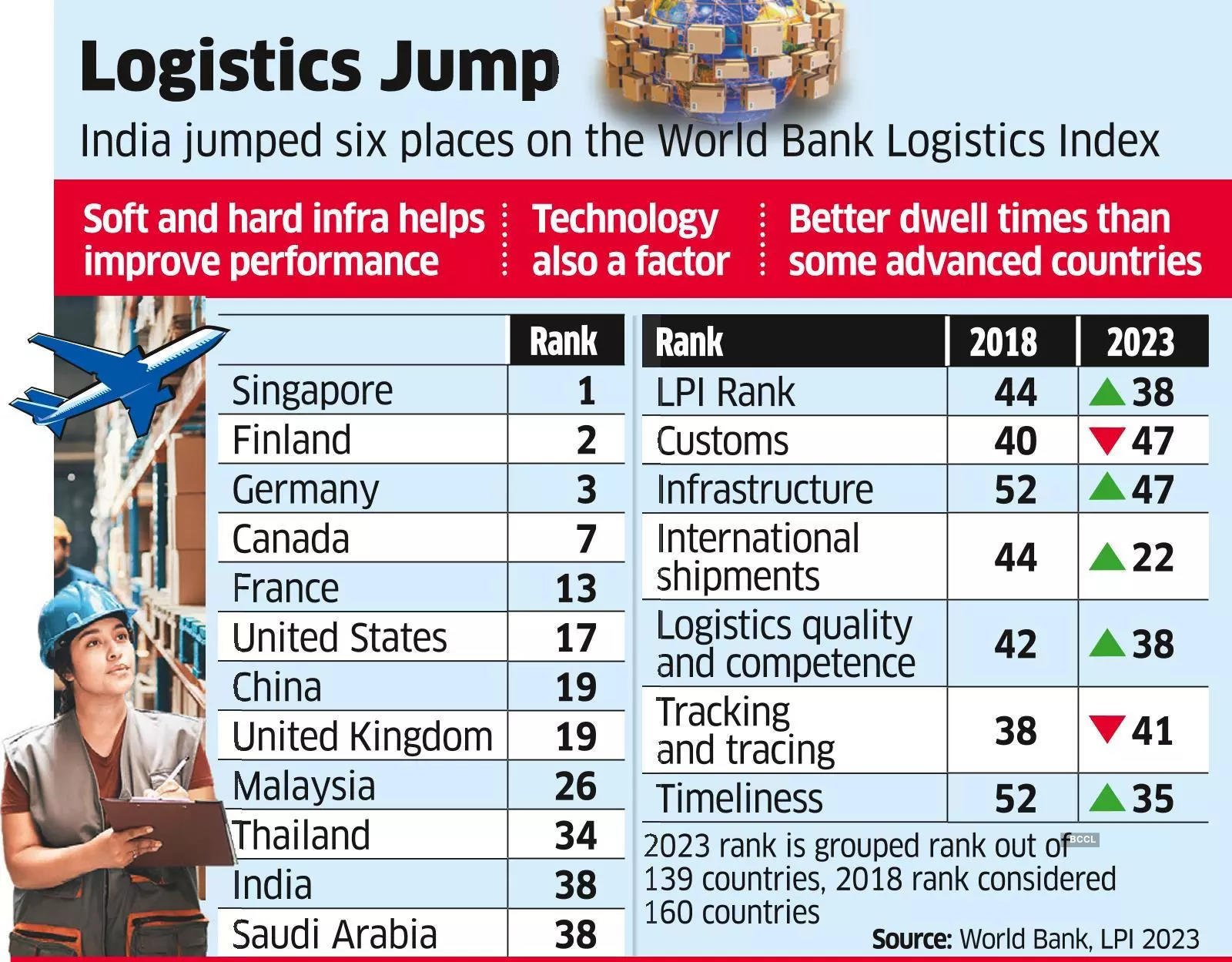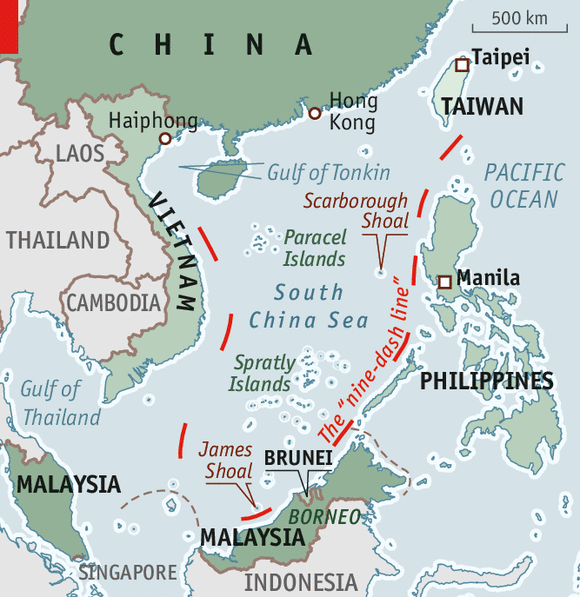
Current Affairs December 09, 2023: Appointment and Removal of Governor, Mera Gaon, Meri Dharohar Project, Open Network for Digital Commerce (ONDC), Gig Economy, Increasing Marriage Age of Women
Subscribers of "Current Affairs" course can Download Daily Current Affairs in PDF/DOC
Subscribe to Never Miss an Important Update! Assured Discounts on New Products!
Must Join PMF IAS Telegram Channel & PMF IAS History Telegram Channel
{GS2 – Polity – IC – Governor} Appointment and Removal of Governor
- Context (IE): A Private member bill was introduced in the Parliament to give states the power to appoint and remove Governors.
- The bill seeks to amend the Constitution to empower the states to appoint governors.
- It seeks amendment of Art 153 and substituting Art 155 & 156 to end “colonial-era indulgences”.
Major Points of Friction in Recent Times
- Allegations of the Centre using the Governor’s position to destabilise state governments.
- Selection of the party to form a government.
- Inordinate delay in giving assent to Bills.
- Reserving the bill for Presidential assent.
Constitutional Provisions Related to Office of Governor
- Art 153: There shall be a Governor for each State.
- Art 155: Governor of a State shall be appointed by the President.
|
- Art 156: The Governor shall hold office during the pleasure of the President.
|
- Article 163: Governor to be aided and advised by the Council of Ministers except in those functions which require his discretion.
SC on Removal of Governor
- In P. Singhal v. Union of India, SC laid down some binding principles:
- The President has the power to remove a Governor without giving him or her any reason, and without granting an opportunity to be heard.
- This power cannot be exercised in an arbitrary, capricious or unreasonable manner.
- The power should only be exercised in rare and exceptional circumstances.
- Mere variance with the policies and ideologies of the central government, or that the central government has lost confidence in him or her, is insufficient to remove a Governor.
- A change in central government cannot be a ground for removal of Governors, or to appoint more favourable persons to this post (Governor).
- A decision to remove a Governor can be challenged in a court of law.
Recommendations by Various Commissions
Sarkaria Commission
- On Appointment of Governor
- CM should be consulted in the Governor’s appointment.
- Governor should be an eminent in some walk of life and from outside the state.
- He should be a detached figure without intense political links, or should not have taken part in politics in the recent past.
- He should not be a member of the ruling party.
- On Removal of Governor
- Governors should not be sacked before completing their five-year tenure, except in “rare and compelling” circumstances.
- Removal procedure must allow the Governors to explain their conduct and fair consideration must be given to such explanation.
- Governors should be informed of the grounds of their removal.
Venkatachaliah Commission
- The Governor should be appointed by a committee comprising the Prime Minister, Home Minister, Speaker of Lok Sabha, and the Chief Minister of the state concerned.
- Governor should be allowed to complete their five-year term. If they are removed before completion of their term, it should be done only after consultation with the Chief Minister.
Punchhi Commission
- Deletion of the phrase “during the pleasure of the President” from the IC.
- Removal by a resolution of the State Legislature (process of impeachment, similar to that of the President, by the State Legislature).
Administration Reform Commission (ARC)
- Appointment of non-partisan persons having long experience in public life and administration.
Way Forward
- Strengthening of Federalism: The Inter-State Council and Rajya Sabha as the chamber of federalism must be strengthened.
- Reform the Method of Appointment of Governor: Appointment by a Panel prepared by the State Legislature and actual appointing authority should be the Inter-state Council, not the GoI.
- Code of Conduct for Governor: It should lay down certain ‘norms and principles’ which should guide the exercise of the Governor’s ‘discretion’ and powers which he is entitled to use and exercise.
{GS2 – Social Sector – Health – Disease} Dress Syndrome
- Context (IE): The Indian Pharmacopoeia Commission (IPC) issued a cautionary notice regarding the widely used pain reliever Meftal.
- Meftal constituent, mefenamic acid, triggers severe reactions like the DRESS syndrome, which affects the internal organs.
|
DRESS Syndrome
- DRESS syndrome (Drug Rash with Eosinophilia and Systemic Symptoms) is a severe allergic reaction.
- It is a delayed T-cell-mediated hypersensitivity reaction in response to certain drugs.
- Damage occurs due to an overreaction from the immune system.
- It has an estimated mortality of up to 10 per cent.
- Gestation period: Two to eight weeks after the drug has been taken.
- Symptoms: Skin rash, fever, hematologic abnormalities, swollen lymph nodes, impact on internal organs.
Indian Pharmacopoeia Commission
|
{GS2 – Vulnerable Sections – Women} Increasing Marriage Age of Women
- Context (TH): Himachal Pradesh govt. set up committee to explore increasing marriage age of women
Rationale for Raising the Age of Marriage
- Preventing Child Marriage: Prescribing a minimum age of marriage will essentially outlaw child marriages and prevent the abuse of minors.
- Promotes Maternal Wellbeing: Preventing child marriages will reduce early pregnancy related complications, malnutrition, & violence (mental/emotional/physical), affecting mother & child’s health.
- Child wellbeing: Study by IFPRI stated that child born to adolescent mothers were more likely to be stunted compared to child born to adult mothers.
- Facilitates Women Empowerment: It will increase women’s access to education and livelihood, leading to their overall societal empowerment.
- Acts as a Catalyst for Social Change towards a more gender sensitive and equal society.
- Help achieve SDG 5 which asks nation-states to formulate policies to achieve gender equality.
Concerns with Raising Age of Marriage
- Inconsistency with other laws:
- Divergence between minimum age of marriage (21) & minimum age of majority (18). A person can vote, be charged with criminal liability, but is deprived of the choice to marry at 18 years.
- Conflict with SC Verdict: In 2018, the Supreme Court ruled that marriage between adults is part of Right to Life under Art 21.
- Failure to address underlying causes such as illiteracy, poverty, low status of women in society, and lack of awareness. Raising the age of marriage through legislation cannot be panacea to all problems.
- Negatively impact marginalized sections by making them law-breakers.
- Increase female foeticide as Girls will be seen as a burden due to extra years of support.
- Legal loopholes: Child marriages, in India, are only voidable, and not void by default.
- Against international convention: The CEDAW (Convention on the Elimination of all Forms of Discrimination Against Women) Committee recommends 18 as the age of marriage
Way Forward
- Raising the legal age of marriage for women to the same age as men, in a phased manner.
- Ensuring All Encompassing Women Empowerment to attack the root cause by increasing access to education and increasing work opportunities for women.
- Raising awareness against child marriage and about women’s sexual & reproductive health and rights.
Prohibition of Child Marriage (Amendment) Bill 2021
|
{GS3 – IE – Industry} Gig Economy
- Context (PIB): The Code on Social Security, 2020 (CSS) envisages framing of suitable social security for Gig and Platform workers.
Issues with CSS for Gig Workers
- Platform workers can claim the benefits provided under the Social Security Code but cannot claim labour rights.
- They are not entitled to go to court for a stable and better pay package, or against the algorithms used by the platforms that allocate jobs to them.
- Provides basic welfare measures as a joint responsibility of the Central government, platform aggregators, and workers, but does not state which stakeholder is responsible for delivering what quantum of welfare.
- Overlap in the definitions of unorganised, gig and platform workers. This makes it unclear how schemes specific to these categories of workers will apply.
- Duality of appropriate governments (central vs state) in certain cases like the provision of social security for unorganised sector workers.
Gig Workers
- CSS defines a gig worker as ‘a person who performs work or participates in a work arrangement and earns from such activities outside of traditional employer-employee relationships.’
- Those engaged in hourly or part-time jobs in everything from catering events to software development.
- The work is usually temporary and completed within a stipulated time.
- Freelancers, contingent workers, etc. come under the umbrella of gig workers.
Platform Workers
- CSS defines platform work as “A form of employment in which organisations or individuals use an online platform to access other organisations or individuals to solve specific problems or to provide specific services in exchange for payment”.
- Examples of platform workers include Ola or Uber drivers, Swiggy or Zomato delivery agents, etc.
| Gig economy is a free market system in which temporary positions are common and organisations contract with independent workers for short-term engagements. |
India and Gig Economy
- India is 5th largest in flexi-staffing globally, after the US, China, Brazil and Japan (India Staffing Federation, 2019 Report).
- Share in employment: 7.7 million workers are engaged in gig economy, constituting around 1.5% of total workforce of India. Expected to expand to 23.5 million by 2029-30.
- It has the potential to add 1.25% to India’s GDP.
- The median age of Indian gig workers is 27, signifying the potential to reap the demographic dividend.
- Trend shows the concentration of workers in medium skills is gradually declining and that of the low skilled and high skilled is increasing.

Growth Drivers of the Gig Economy
- Technological advancements led to proliferation of online marketplaces and platforms making it easier to connect with potential customers and showcasing their skills and services.
- Fluctuations in job market with instances of covid-19 demanding ‘social distancing’ norms.
- Emergence of start–up culture that hire contractual workers to reduce fixed costs and increase efficiency by hiring skilled professionals on project basis.
- Government incentives like digital India, Startup India.
- Growth of freelancing platforms like Uber, Ola, Swiggy.
Significance of Gig Economy
Benefits to the organisations
- Reduced cost as it allows engaging best talent for a specific period forgoing the need to pay fixed costs like pension & insurance benefits.
- Greater Agility by providing the organisation to quickly increase/decrease team size and composition in response to market unpredictabilities.
Benefits to the workers
- Flexibility by providing the worker the flexibility to work for more than one contractor and choose the working hours upon its will.
- Non-discriminatory access due to lack of entry barriers.
- Diverse income streams by providing flexibility to work in multiple projects simultaneously.
Socio-economic benefits
- Expanding labour participation for women & students who may only be available for part-time work.
- Development of rural areas by allowing artisans to sell their products and farmers to directly sell their products to a wider market, eliminating intermediaries and increasing their earnings
Challenges
- Lack of social security net such as Health, pension benefits etc, leading to informalisation of labour.
- Income instability and poor job security
- Lower bargaining power due to individualistic nature of work, and geographically scattered gig workers, unionization of workers becomes difficult.
- Regulatory challenges: Gigs are one-to-one relationships between the contractor and the contractee which is easy to abuse by the companies and hard to monitor by the regulators.
- Regional disparity due to non-accessibility in areas where internet connectivity are unavailable.
- Can replace Full time employees.
- Work-life balance: The flexibility can actually disrupt the work-life balance and activities of daily life.
Way Forward
- Regulatory & Legal Measures: Mandating basic labour protection like minimum wages, maximum working hours, paid leaves etc.
- Fiscal incentives like tax holidays or grants to businesses which provide employment to Socio-economically disadvantaged groups.
- Providing Social Security: Mandatory coverage under the Pradhan Mantri Jan Arogya Yojana, and Pradhan Mantri Jeevan Jyoti Bima Yojana may be considered.
- Empowering gig workers by introducing peer-to-peer mentoring and establishing hybrid sharing platforms (offline and online) to enable workers to connect.
{GS3 – IE – Industry} Special Economic Zone (SEZ)
- Context (TH): The Special Economic Zones (Fifth Amendment) Rules, 2023 have been notified.
- As per the rules, the Board of Approval can permit the demarcation of a portion of an IT Enabled Services Social Economic Zone (ITES SEZ) as a non-processing area.
- Repayment of tax benefits is to be calculated as the benefits provided for the processing area of the SEZ, in proportion to the built-up non-processing area to the total built-up processing area.
|
Special Economic Zone (SEZ)
- It is a specifically delineated duty-free enclave deemed to be foreign territory for the purposes of trade operations, duties and tariffs.
- Goods and services into the SEZ area from Domestic Tariff Area (DTA) are treated as exports, and goods from the SEZ area into DTA are treated as imports.
|
SEZ in India: Background
- India was one of the first in Asia to recognize the effectiveness of the Export Processing Zone (EPZ) model in promoting exports, with Asia’s first EPZ set up in Kandla in 1965.
- SEZ Policy was announced in 2000 as a part of Foreign Trade Policy. Special Economic Zones Act, 2005, supported by SEZ Rules, came into effect in 2006.
- Special Economic Zones Act, 2005, under Section 18, provides for the establishment International Financial Services Centres (IFSCs) within an SEZ provided that it shall approve only one IFSC in an SEZ.
Objectives of SEZ Act
- Generation of additional economic activity
- Promotion of exports of goods and services
- Promotion of domestic and foreign investment
- Creation of employment opportunities
- Development of infrastructure facilities
Challenges of SEZ
Failure to Meet Intended Objectives
- Limited Exports potential: Despite reaching 10 lakh crore worth of exports in 2021-22, SEZs account for only 30% of India’s total exports (China – > 60%).
- Challenges of Manufacturing SEZ: SEZs have failed to bolster manufacturing. For eg. more than 60% of SEZ are in IT/ITES sector.
- Sub Optimal Contribution to Employment: Concentration of SEZs close to urban agglomerations resulting in employment generation in the districts that are already industrialized.
- Poor last-mile & first-mile connectivity: SEZ Framework failed to link it to infrastructure such as urban amenities, logistics, port development, etc.
- Large Non–Operational SEZs: Nearly 40% of approved SEZs are still to commence operation.
Flawed Structure & Location of SEZ
- Large number of small-sized SEZs as small as 100 hectares, making them unviable to set up industries.
- Under-utilization of Area: About 50% of land has remained unutilized in SEZs due to presence of sector specific constraints in utilization of land.
- Disparity between States: 65% SEZs are in just 5 States (all coastal states) while NE states, Bihar and Jharkhand have a minimum number of SEZs and very low FDI.
Regulatory Complexities
- Barrier in Single Window Clearance System as many states have not synced their state laws with central SEZ Act leading to delayed approvals.
- Labour Laws and Land Acquisition: SEZ Framework failed to simplify labour and land acquisition laws
- Unfavourable Tax regime: Uncertainty in government policies, specifically tax ie. withdrawal of MAT, Dividend Distribution Tax benefit, introduction of sunset clause etc.
Miscellaneous
- Domestic sale of SEZs face disadvantage as they have to pay full customs duty compared to lower rates with ASEAN.
Way Forward
- Should be in tune with Atmanirbhar Bharat goal: Goods imported from SEZs should be treated at par with FTA/PFTA countries to provide a level playing field.
- Greater autonomy to serve both international and domestic market to ensure reduction in import dependency and utilisation of unused capacity.
- Incentives based on factors like investment in technology, job creation, and investment committed instead of export performance can provide a boost to the required economic activity alongside catering to the existing WTO dispute.
- Stability in law and policy with effective and Fastrack dispute resolution mechanism and consistency across different statutes.
- Single window system: Day to day operations and regular approvals may be allowed on self-certification basis and risk-based assessments with increased involvement of technology.
{GS3 – S&T – IT} Open Network for Digital Commerce (ONDC)
- Context (PIB): Over 3000 Farmer Producer Organisations and 400 Self-Help Groups, micro-entrepreneurs and social sector enterprises register to be a part of Open Network for Digital Commerce.
- It is globally first-of-its-kind initiative that aims to democratise Digital Commerce and reduce dominance of online retail giants (like Amazon, Walmart-owned Flipkart etc.).
- Nodal Ministry: Department for Promotion of Industry and Internal Trade (DPIIT), Ministry of commerce, Quality Council of India (QCI).
- It is incorporated as a private, non-profit company.
- ONDC aims to streamline transactions between buyers and sellers, irrespective of the platforms (in-termediaries) they are affiliated with.
- Just like Unified Payments Interface (UPI) enables smooth money transfers across diverse payment platforms, ONDC enables smooth transactions between buyers and sellers across platforms.
Objectives of ONDC
- Democratization & decentralization of e-Commerce;
- Inclusivity and access for sellers;
- Increased choices and independence for consumers
- Making goods and services cheaper.
Quality Council of India (QCI)
|
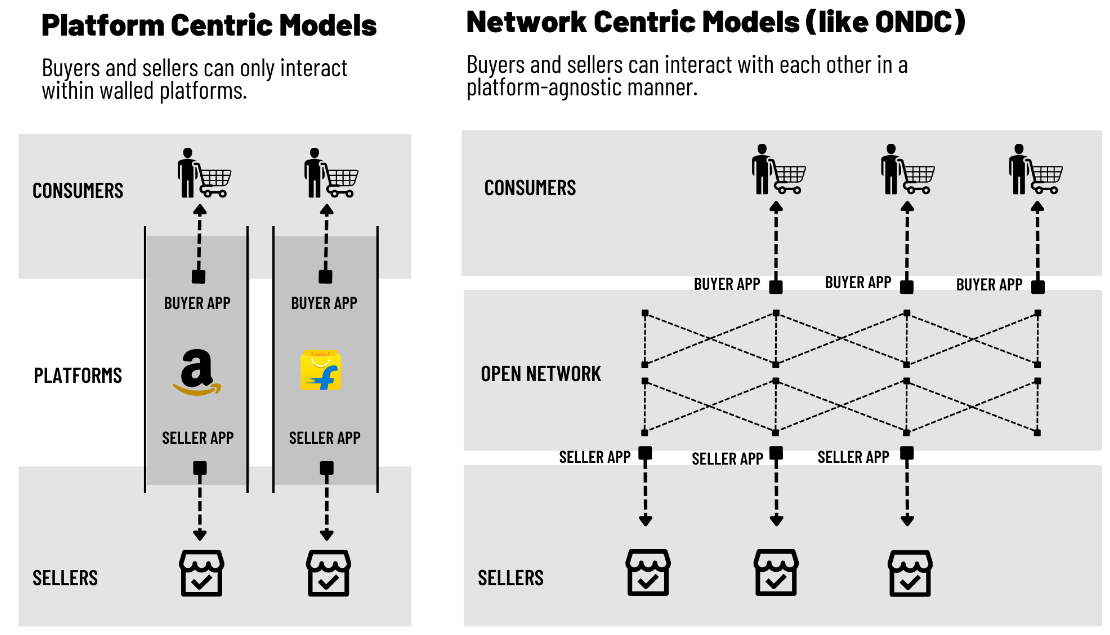 Open source software is code that is designed to be publicly accessible—anyone can see, modify, and distribute the code as they see fit. Open source software is code that is designed to be publicly accessible—anyone can see, modify, and distribute the code as they see fit. |
Privacy of Information in the Network
- ONDC shall not mandate sharing of any transaction-level data by participants with itself.
- ONDC will work with its participants to publish anonymised aggregate metrics on network performance without compromising on confidentiality and privacy.
- ONDC will be compliant with the Information Technology Act, 2000.
Benefits & Challenges of ONDC
|
Benefits of ONDC |
Challenges of ONDC |
| Provides a level playing field for e-commerce. | Implementation involves technological complexity |
| Offers wider digital market access for MSMEs and traders. | Established e-commerce companies may lose customers to ONDC. |
| Drives competition and innovation in various sectors | Sellers already have the freedom to list products on multiple platforms. |
| Increases freedom of choice for consumers. | Limited impact as information services like price-comparison websites already exist. |
| Creates a neutral and regulated platform. | Uncertainty in handling customer complaints. |
| Promotes openness & interoperability. | Reluctance from major e-commerce players to join due to control, dominance, and infrastructure challenges. |
{Prelims – A&C – Initiatives} Mera Gaon, Meri Dharohar Project
- Context (PIB): GoI will document all villages under the Mera Gaon, Meri Dharohar (MGMD) Project.
- It is a pan-India initiative of Ministry of Culture under National Mission on Cultural Mapping.
- It was launched in July 2023.
- Under the MGMD, information is collected under seven broad categories as given below-
- Arts and Crafts Village
- Ecologically Oriented Village
- Scholastic Village linked with Textual and Scriptural Traditions of India
- Epic Village linked with Ramayana, Mahabharata and/or Puranic legends and oral epics
- Historical Village linked with Local and National History
- Architectural Heritage Village
- Any other characteristic that may need highlighting such as fishing village, horticulture village, shepherding village etc.
Objective
- Culturally map India’s villages on a comprehensive virtual platform.
- Encourage appreciation for India’s culture and traditions, paving way for economic growth, social harmony, and artistic development in rural communities.
MGMD Portal
- It showcases essential information about each village, including its geographical location, demographic aspects, and description of traditional dresses, ornaments, temples, fairs, festivals, etc.
- It serves as a one-stop destination for exploring and virtually visiting every village in the country.





![PMF IAS Environment for UPSC 2022-23 [paperback] PMF IAS [Nov 30, 2021]…](https://pmfias.b-cdn.net/wp-content/uploads/2024/04/pmfiasenvironmentforupsc2022-23paperbackpmfiasnov302021.jpg)


